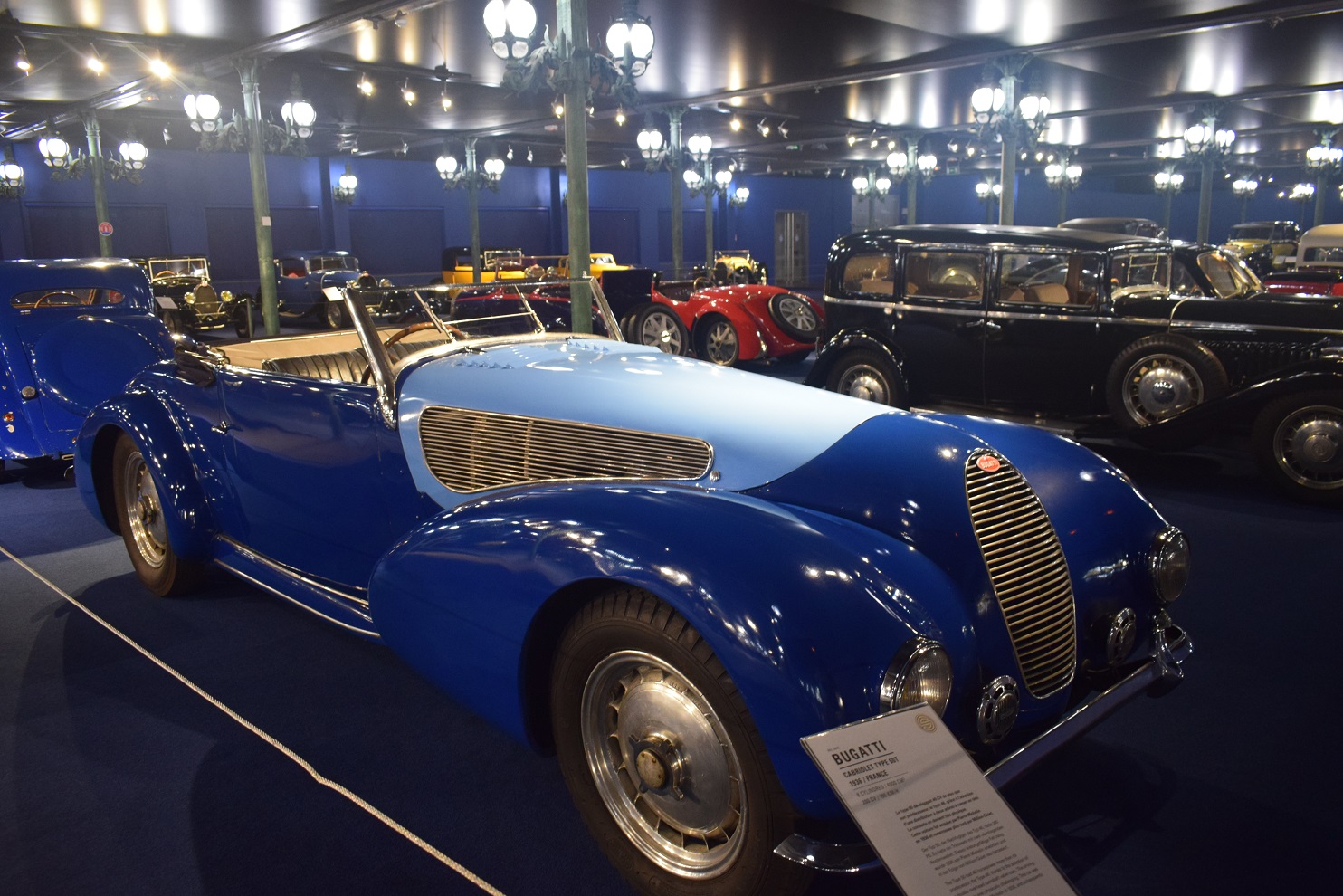The third installment of the Mulhouse report ended with a little joyride in the tour bus. As it turned out, I made the right choice, as apparently, I completely missed the segment that featured some of the most expensive and rarest cars of the Museum. But before I reached the bus stop, I passed by the temporary Porsche exhibition, one of the numerous events worldwide to commemorate the 70th Anniversary of the sportscar manufacturer.

To mark this anniversary, the Cité showcased the Régis Mathieu collection, which brought together exceptional models from the Stuttgart brand. Lustrerie Mathieu is a lighting company that won international recognition for his restoration of chandeliers, which include those in the Opéra Garnier, the Hall of Mirrors at the Château de Versailles, the Philadelphia Opera House, and in many private and public chateaux.

Régis Mathieu has acquired more than twenty Porsches since the 1980s, the Cité de l’Automobile is exhibiting around ten models, complemented by the chandeliers of the collector.
The cars include truly historical ones (like the 356), rarities like the 914, some transaxle models and unique sportscars (like the CS and RS versions and even race versions like 718RSK and 904 GTS). As it was the case with this kind of lighting, taking photos proved to be a real challenge here.
There is one major section left, that offers the most astonishing collection of classic luxury cars of long-gone elite brands on the other side of the grand hall. I was really astonished to see the vast stock of Bugattis. I knew that Mulhouse is the place to find the most extensive collection of Bugattis, but I have already seen dozens of them scattered all around the Museum, from the Peugeot BB to the last pieces of the 50’s pre-series.
Apparently, this was just the beginning: in the next hall, there are another few dozen Bugattis, mainly from the late 30’s (the bulk of them are Type 57s).
The Type 57 model has many versions, thus it is more than just a variation of colours: a white Atalante is an entirely different proposition than the traditional roadsters.
The main attraction of the floor consists of the two Type 41 Monsters, that take center stage. If there was ever a motorcar that deserved to be referred to as a masterpiece, that car is the Bugatti Royale. Its specs are the state of the art of that time, its 8-cylinder inline engine of nearly 13 litres produces 300 horsepower, that could bring the three-tonnes of automotive excess to reach top speeds of 200 km/h. Of course, there was a small price to pay, the fuel consumption of around 50 litres was just the beginning, the Royale was also the world’s most expensive car at that time. The car was designed to outshine everything in terms of power, quality and reputation. However, only six models were ever produced, before the War came.
The blue “Coupé Napoleon” was Ettore Bugatti’s personal runaround, remaining in the ownership of the Bugatti factory until it was purchased by Fritz Schlumpf. The body was designed by Jean Bugatti, son of Ettore, when he was only 20. It was built on the first definitive “Royale” chassis, with the same numbering as the 1927 prototype that was destroyed in an accident. The photos may not fully reveal, the unusually large size of the car (6 meters), also due to a harmonious overall design, and clear lines.
The black Bugatti Royale is described as the most austere of the six models. This chassis is the last of three that Ettore managed to sell before the war to Captain Cuthbert Foster in London, who commissioned coachbuilders Park Ward to build the body, creating a typical British-style limousine.
The two others were sold to the famous clothing manufacturer Esders (chassis 41111) and to Dr. Fuchs, a German surgeon (chassis 41121). A rebuilt Esders roadster is on display at the beginning of the exhibition.
If you see the Royale in real life, it overshadows everything of that period, and the Museum does its best to illustrate this with an impressive set of luxury cars from long-forgotten brands.
There are luxury limos from Isotta Fraschini, Hispano-Suiza and Panhard et Levassor (3-4 from each brand!!!), but also today’s successful brands are represented: the formidable luxury cars of Mercedes, Rolls Royce, Bentley would steal the show anywhere, had there be no Type 41 Royales on the centre podiums.
I arrived from Sochaux to the Cité by noon, and left with a completely egzosted exhausted body and overloaded mind at the end of the day. I have no doubt now, that the Cité is the greatest car collection in the world. But it’s more than being excessively huge, it excels in every area, from interactive and educational sections to children’s corner, race cars from all ages and sports, modern and even some contemporary cars, great design and consistent architecture, all the boxes are checked. I could find single aspects where the Louwman or Mercedes Museum can beat the Cité, but the credit for overall excellence goes to Mulhouse.

